 Naji Al-Ali (1936 - 1987)
Naji Al-Ali (1936 - 1987)Naji Al-Ali lived on the edge of danger because he was closest to the truth. He was the last scream that we never dared utter for fear to be quenched with it.
The Palestinian cartoonist par excellence, Naji Al-Ali is an artist who transcended fictional frontiers using lines that draw free borders, the boundaries of freedom without pavements, the freedom of the artist, the people, and the homeland.
Every morning, for more than 13 years (1975 - 1987) Palestinians everywhere followed the cartoonist Naji Al-Ali in whichever newspaper he published. His cartoons were re-printed in more than one form, and discussed in every forum. He made everyone read the newspaper starting from the back page. Everyone who worked with him said that he was wild, that the burning fire within him devoured everything, because his heart was in his quill and his quill was easily agitated and inflamed. He felt that Palestine was his own, and it will not return piece-meal, but all at once, all at once from the river to the sea, or else, no one will forgive. The bitterness within him was constantly expanding, and he eventually thrashed at everyone with his ruthless quill.
His character was "Handala", a young boy with curly hair whose back is always turned to the reader. His name means "bitterness" in Arabic, and he represents the distress the artist felt. In describing his work, Naji Al-Ali wrote:
"The child Handala is my signature, everyone asks me about him wherever I go. I gave birth to this child in the Gulf and I presented him to the people. His name is Handala and he has promised the people that he will remain true to himself. I drew him as a child who is not beautiful, his hair is like the hair of a hedgehog who uses his thorns as a weapon. Handala is not a fat, happy, relaxed, or pampered child, he is barefooted like the refugee camp children, and he is an 'icon' that protects me from making mistakes. Even though he is rough, he smells of Amber. His hands are clasped behind his back as a sign of rejection at a time when solutions are presented to us the American way. Handala was born ten years old, and he will always be ten years old. At that age I left my homeland, and when he returns, Handala will still be ten, and then he will start growing up. The laws of nature do not apply to him. He is unique. Things will become normal again when the homeland returns. I presented him to the poor and named him Handala as a symbol of bitterness. At first he was a Palestinian child, but his consciousness developed to have a national and then a global and human horizon. He is a simple yet tough child, and this is why people adopted him and felt that he represents their consciousness."

"What is the role of political caricature?""Its role is to bare life... caricature always hangs life to dry in the open air and in the public streets... it grabs life wherever it finds it to place it on the rooftops of the world where there is no place to fill the gaps or cover its holes.""When will people see Handala's face?""When Arab dignity is no longer threatened, and when the Arab individual regains his freedom and humanity. Still, the most tiring part is to continue the road with all its contradictions. The weariness of the homeland will always remain deep inside.""Handala is the witness of the century who will never die... the witness who entered life all of a sudden and will never leave it. He is the legend-witness. This character was born to survive... I will continue within him even after I die."
Naji Al-Ali was born in Ash-Shajara village in 1936, one of 480 villages destroyed after 1948. His family was displaced to Ein Al-Hilweh refugee camp in Lebanon. Between 1957 and 1983 he worked for a variety of newspapers in Lebanon and the Gulf. In 1983 he returned to Kuwait to work for "Al-Qabas" newspaper until 1985 when he was forced to leave to London to work with the same newspaper in its London office. During this period he published more than 40,000 cartoons. The New York Times once wrote: "If you want to know what the Arabs think of the US look at Naji Al-Ali's cartoons." The Time magazine also described him saying: "This man draws with human bones." The 'Asahi' Japanese newspaper wrote: "Naji Al-Ali draws using phosphoric acid."
On Wednesday July 22 1987 at 17:10 Greenwich meantime, Naji Al-Ali parked his car in central London, and walked a few meters towards the offices of Al-Qabas newspaper where he worked. A dark complexioned, curly haired, young man surprised him with a bulletin his head and ran away as Naji Al-Ali fell on the pavement. On August 29th, Naji Al-Ali finally died in hospital and was buried on September 3rd in Brookwood cemetery in Woking. His death marked the end of an era, and ironically, the beginning of the Intifada in the West Bank and the Gaza Strip. Until this day, his cartoons are used over and over again, and "Handala" is still as relevant today as he was twenty years ago.

From "This week in Palestine" No 14, August 1999
Posted by Martin BretterklieberUpdate: 26. Mai 2001.




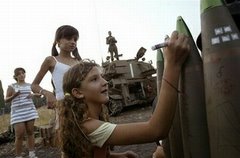
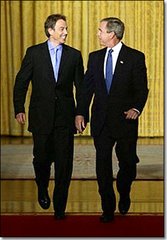

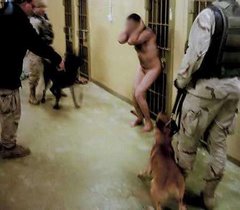


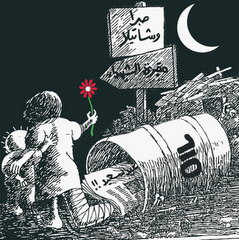

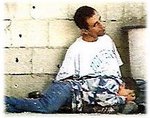
No comments:
Post a Comment